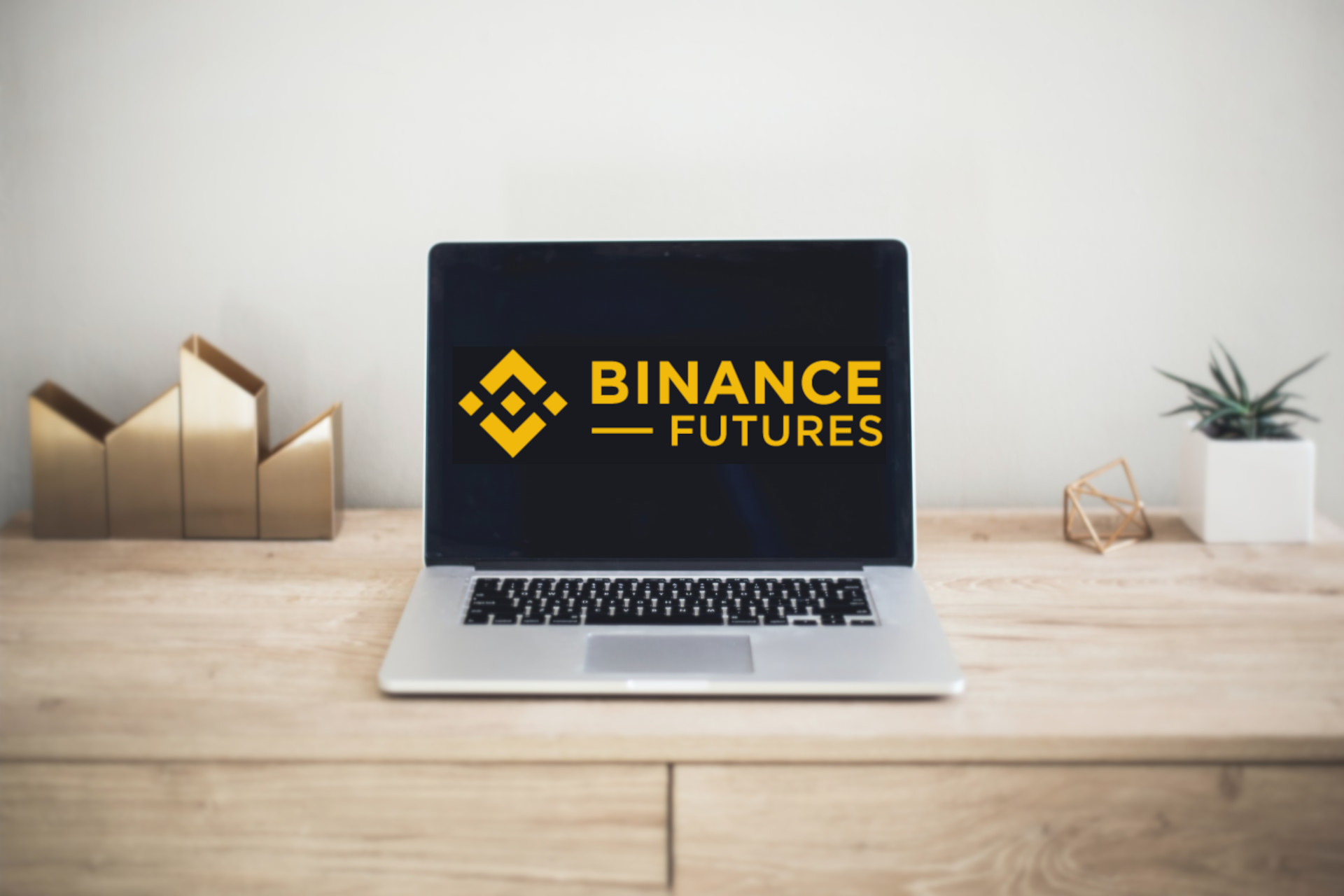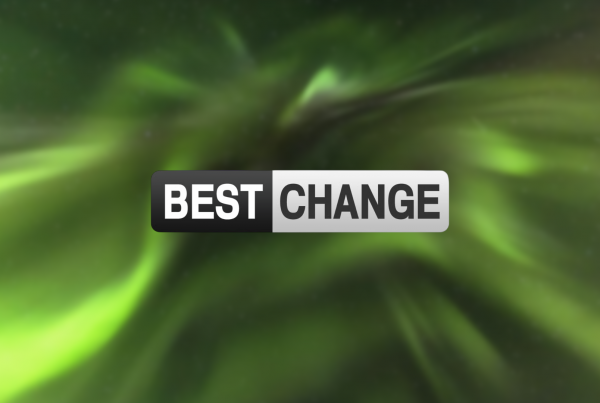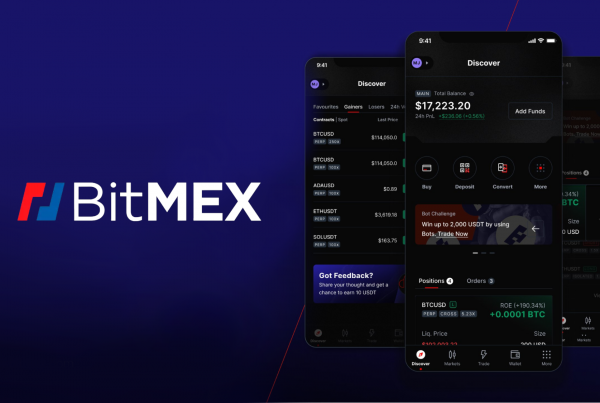
Futures are a type of financial derivatives that oblige parties to buy or sell a specific commodity, asset, or security at a predetermined future date for a set price. Since the financial contract allows investors to make a profit regardless of the way the market prices move, it is not surprising that futures are one of the most popular investment instruments, both in traditional finance and in crypto.
Binance Futures is the largest futures trading platform in the blockchain industry in terms of trading volume, user activity, and the sheer number of supported crypto assets. According to data from crypto tracking website CoinCodex, Binance’s futures trading platform regularly facilitates more trading volume per day than the next four exchanges combined.
In this article, we are going to examine the benefits of Binance Futures and take a look at its core features. But first, we will explain what are stablecoins and why are they important when it comes to futures trading.
What are stablecoins?
Stablecoins are digital currencies that have their value pegged to the price of another currency, asset, or commodity. In some cases, their peg can be managed by smart contracts which automatically control their circulating supply based on supply and demand dynamics.
While fiat-pegged stablecoins, like Binance USD (BUSD) and Tether (USDT), are the most popular, precious metals- and crypto asset-pegged stablecoins are gaming in popularity, especially in recent years.
Stablecoins can at all times be redeemed at a 1:1 ratio for the assets they are tracking. For instance, 1 BUSD can be redeemed for 1 USD, 1 PAX Gold for 1 fine troy ounce of gold, and so on. Their price stability makes stablecoins an excellent choice when transacting value across cryptocurrency platforms, exiting cryptocurrency positions, earning interest on crypto savings, and when in need of stable collateral while derivatives trading.
In general, stablecoins belong to one of the three categories when it comes to the asset they are collateralized with. Fiat-collateralized stablecoins are – as the name suggests – backed by fiat currencies and cash-like reserves. Crypto-collateralized stablecoins are backed by one or a collection of crypto assets.
Last but not least, algorithmic stablecoins are backed by arbitrage and other market mechanisms. In practice, this can make algorithmic stablecoins more prone to lose their peg, as was the case in May 2022, when Terra Classic (LUNC) ecosystem’s leading stablecoin USTC collapsed due to increased selling pressure.
What is BUSD?
BUSD is a fiat-collateralized stablecoin pegged to the value of the US dollar. First launched in September 2019, the BUSD stablecoin has since emerged as one of the most popular stable digital currencies in the industry. As of June 2022, BUSD is the third largest stablecoin, boasting a market capitalization of over $17 billion.
BUSD was developed in partnership with Binance and Paxos, a New York-based financial institution and technology company specializing in blockchain. The USD-denominated stablecoin received a regulatory stamp of approval from the New York State Department of Financial Services (NYDFS).
Here’s a quick summary of BUSD’s main features:
- Developed in a joint effort by Binance and Paxos
- One unit of BUSD is equivalent to one US dollar
- BUSD is fully redeemable for USD at all times
- Each BUSD in circulation is backed by a corresponding amount of USD reserves
- The BUSD stablecoin is audited on a monthly basis in accordance with strict regulatory standards
- Supported on more than 60 cryptocurrency exchanges and over 20 blockchain wallets
- Can be used to trade with multiple contracts simultaneously thanks to Binance’s Multi-Assets Mode
Using BUSD as collateral when trading with Binance Futures
Binacne allows futures traders to invest in derivative contracts of USDⓈ-M Futures and COINⓈ-M Futures variety. The latter are denominated and settled in digital currencies (think BTC, ETH, etc.), while the former are denominated and settled in stablecoins. There are two types of USD-M futures available to Binance traders – USDT- and BUSD-margined.
The benefits of using BUSD-margined contracts include lower maker and taker fees and support for going long (predicting a future price increase) or short (predicting a future price decrease) on a wide variety of supported cryptocurrencies:
Here’s a table comparing potential savings when using BUSD-margined contracts instead of USDT-margined contracts. Note that the example below shows a position worth $100,000. For a complete breakdown of USDT and BUSD Futures trading fees, click here.
| Maker Fee | Taker Fee | |
| BUSD Pairs | -0.01% (Rebate $10) | 0.017% (Cost $17) |
| USDT Pairs | 0.02% (Cost $20) | 0.04% (Cost 40%) |
| Total Savings | $30 | $23 |
In addition to unlocking lower trading fees, BUSD can be used to generate passive income streams via Binance’s suite of Flexible and Fixed savings products, to participate in yield farming liquidity pools, and as an investment vehicle for promising blockchain projects hosted on Binance’s Launchpad and Launchpool platforms.
How to trade BUSD-margined futures?
In order to trade BUSD-margined futures, or use any of Binance’s products and services, you need to create an account on Binance. After that, you can proceed to the Binance Futures marketplace.
The BUSD-M Futures can be accessed right from the Binance homepage (see the image below). Keep in mind that perpetual contracts (futures contracts without expiry date) are the only type of futures available when using BUSD as a settlement asset.
When on the Futures main trading screen, you will find different crypto/BUSD pairs in the upper left corner of the screen (highlighted in yellow in the image below). When entering a futures position, you can pick between Cross margin and Isolated margin modes (highlighted in blue). To trade with leverage and magnify exposure to market volatility, Binance lets traders select a leverage level between 1x and up to 125x.
In the section on the right side of the trading screen (highlighted in red), users can specify various order paraments, including order types, take profit and stop loss levels, and more. Last but not least, in the Margin Ratio section located in the bottom right corner (highlighted in green), users can monitor their risk of liquidation and turn on Multi-Assets Mode (more on that in the following section).
Check the helpful overview put together by Binance for more information about BUSD-margined futures.
Multi-Assets Mode – Easily manage BUSD- and USDT-margined positions
Launched in 2021, Multi-Assets Mode allows traders to share liquidity and margin across BUSD- and USDT-margined futures contracts, giving investors greater flexibility and more control over their risk exposure.
With Multi-Assets Mode enabled, collateral is automatically shared between futures collateralized with either BUSD or USDT. This eliminates the need to manually manage BUSD and USDT collateral and makes it easier for traders to avoid liquidations. Also, the feature allows traders to pursue potential arbitrage opportunities that arise from time to time – for instance, a trader may notice BTC/USDT is trading at a lower price than BTC/BUSD. In such a case, the position can be sold in the latter trading pair to take advantage of minute price differences and make a risk-free profit.
To turn Multi-Assets Mode on, go to the Margin Ratio section (see the “How to trade BUSD-margined futures?” section), navigate to the bottom of the menu, and select “Asset Mode”. Proceed by clicking on the “Multi–Assets Mode” to turn the liquidity sharing feature on.
For more information about the Multi-Assets mode, including a step-by-step guide to turning on the feature on desktop as well as on mobile clients, click here.
Mock Trading – Put your trading strategies to the test without risking real money
For traders who lack the experience, or simply want to try out new investment strategies in a risk-free environment, Binance launched the so-called Mock Trading feature. Each Mock Trading account starts with 3,000 in imaginary USDT, which can be used just as on the real version of the Binance Futures platform. Users can try different order types, leverage levels, and more.
Mock Trading can be found by going to the Binance homepage, clicking on the user icon in the upper right corner, and then clicking on the “Mock Trading” button.
Final Thoughts
Using BUSD-margined futures contracts on Binance Futures comes with several benefits. For starters, lower fees and the ability to predict future prices of more than a dozen major cryptocurrencies allow investors to make a profit regardless of which direction the market moves. In addition, the ability to share liquidity and margin between USDT and BUSD-margined positions allows Binance users to pursue additional trading opportunities and more easily manage risks. Hopefully, this article helped answer your questions regarding BUSD-margined futures.



